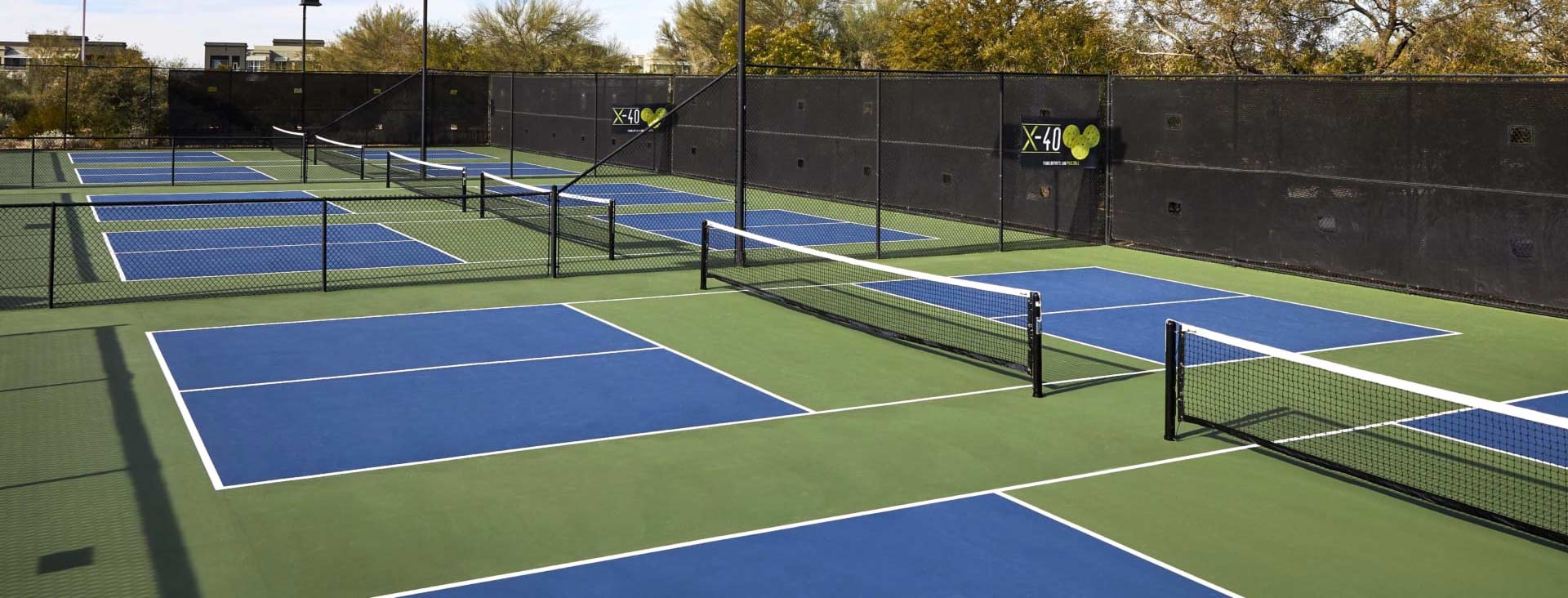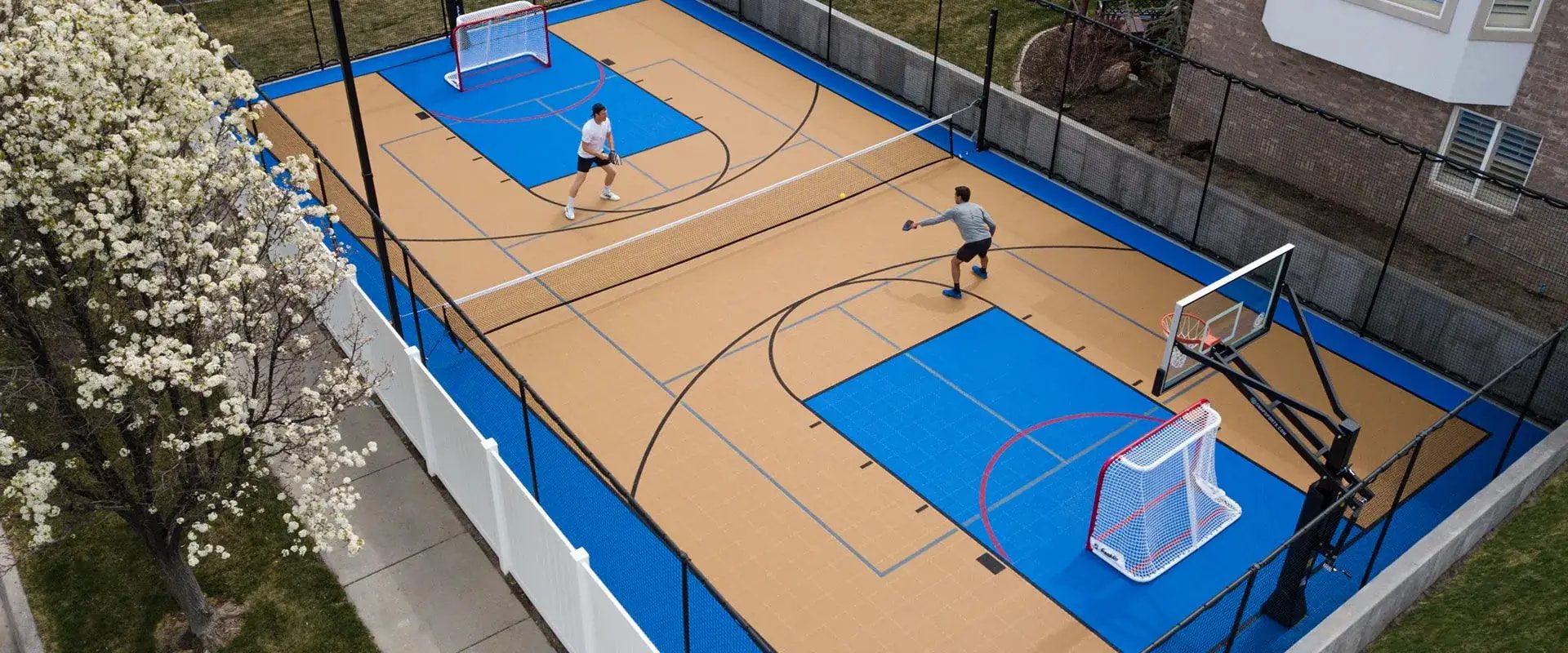Exactly how to Select the Best Pickleball Courts Design & Construction in Illinois and Midwest
Exactly how to Select the Best Pickleball Courts Design & Construction in Illinois and Midwest
Blog Article
Trick Consider the Construction of Pickleball Courts: From Site Choice to Final Surfaces
The building and construction of pickleball courts encompasses an array of essential aspects, beginning with the choice of an appropriate website that stabilizes access with environmental considerations. Necessary components such as court measurements, surface area materials, and water drainage systems dramatically impact not only the quality of play yet additionally the longevity of the center. In addition, interest to lights and ending up touches can raise the total experience for gamers and spectators alike. Comprehending exactly how each of these components interrelates may expose understandings that are typically overlooked, prompting a closer evaluation of finest methods in court building and construction.
Site Selection Standards
When starting the building and construction of pickleball courts, it is vital to pin down the site option standards that will certainly make sure optimum playability and access. The area has to be easily obtainable for players, preferably situated near suburbs or recreation center, to encourage participation.
In addition, the surface needs to be degree and stable, as irregular ground can result in safety and security hazards and impact gameplay. Sufficient drainage is also essential; choosing a website with excellent water drainage will assist preserve court conditions throughout damaging weather.
One more crucial consideration is the availability of utilities. Accessibility to electricity and water is essential for lights and upkeep objectives. In addition, proximity to auto parking centers is crucial, promoting very easy gain access to for players and viewers alike.
Environmental elements can not be overlooked; natural color from trees can boost player comfort, while direct exposure to prevailing winds may interrupt play. Last but not least, zoning regulations and community support must be taken into consideration to make sure that the task aligns with neighborhood guidelines and obtains the backing it requires for effective application. By meticulously examining these standards, stakeholders can develop an inviting and functional environment for pickleball enthusiasts.
Court Dimensions and Format
To make sure optimum gameplay and adherence to laws, the measurements and design of pickleball courts must be meticulously defined. A basic pickleball court measures 20 feet in width and 44 feet in size for both singles and doubles play. The advised design consists of a non-volley area, generally described as the "cooking area," expanding 7 feet from the net on either side. This location is vital, as it affects player positioning and shot option - Illinois and midwest.
The internet elevation is established at 36 inches at the sidelines and 34 inches at the center, creating a slight dip that impacts ball trajectory. Court markings are just as vital; lines should be 2 inches broad and distinctive in shade to make sure presence.
Furthermore, a buffer zone surrounding the court is a good idea, typically prolonging 5 to 10 feet beyond the sidelines click here now and standards to accommodate gamers' motions and improve security. Correct format and measurements not only guarantee conformity with official policies but additionally enhance the overall having fun experience, fitting both recreational and competitive play. Cautious planning in these locations is vital to the effective construction of pickleball courts.
Surface Material Options
Choosing the best surface product for pickleball courts is vital for making certain ideal player efficiency and safety and security. The selection of surface area can this hyperlink significantly impact gameplay, including ball bounce, traction, and player comfort.
There are numerous alternatives available, each with its distinct attributes. Asphalt is a prominent option due to its toughness and reduced maintenance requirements. It provides a strong having fun surface that can endure various climate problems yet may call for periodic resurfacing.
Concrete is another widely utilized product, offering excellent longevity and a smooth coating. It enables for consistent round bounce but can pop over to this site be difficult on gamers' joints, making it much less preferable for lasting play without proper cushioning.
For those seeking improved convenience and shock absorption, supported acrylic surfaces offer a viable option. These surface areas integrate a base layer with an acrylic topcoat, supplying boosted grip and a softer feeling, which is valuable for reducing the danger of injuries.
Finally, artificial turf is getting grip, particularly for multi-purpose centers. Its adaptability and reduced maintenance needs make it an appealing alternative, though it may not offer the exact same ball action as traditional difficult courts. Mindful factor to consider of these choices will ensure an ideal playing setting.
Drain and Illumination Factors To Consider
Proper drain and reliable illumination are important parts in the building and construction of pickleball courts, dramatically influencing both playability and security. Appropriate drainage systems protect against water build-up, which can result in slippery surface areas and damages to the court framework. A well-designed drain plan integrates sloped surfaces and suitable products to promote water flow far from the playing area - Illinois and midwest. This not only protects the stability of the court yet also lessens downtime due to bad weather.
Lights is just as essential, specifically for courts planned for night use. The placement of lighting fixtures must be strategically prepared to get rid of darkness and offer even distribution of light throughout the court.

Final Coatings and Maintenance
After dealing with drain and illumination factors to consider, focus transforms to the last coatings and continuous upkeep of pickleball courts. Typical options consist of acrylic coatings and specialized sporting activities surfaces that give optimum traction and padding.

Seasonal upkeep might consist of resurfacing every few years, depending on usage and environmental variables. Properly maintaining webs, court lines, and surrounding locations is similarly vital to offer a safe and delightful playing experience. By buying top quality finishes and adhering to an organized maintenance routine, center proprietors can guarantee their pickleball courts continue to be in outstanding condition for years to find.
Final Thought
In final thought, the successful building and construction of pickleball courts hinges on thorough attention to several key aspects. Quality surfaces and a durable maintenance timetable are important for protecting the court's condition, boosting the general experience for gamers and viewers alike.
Report this page